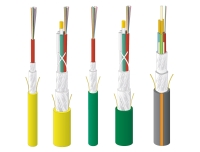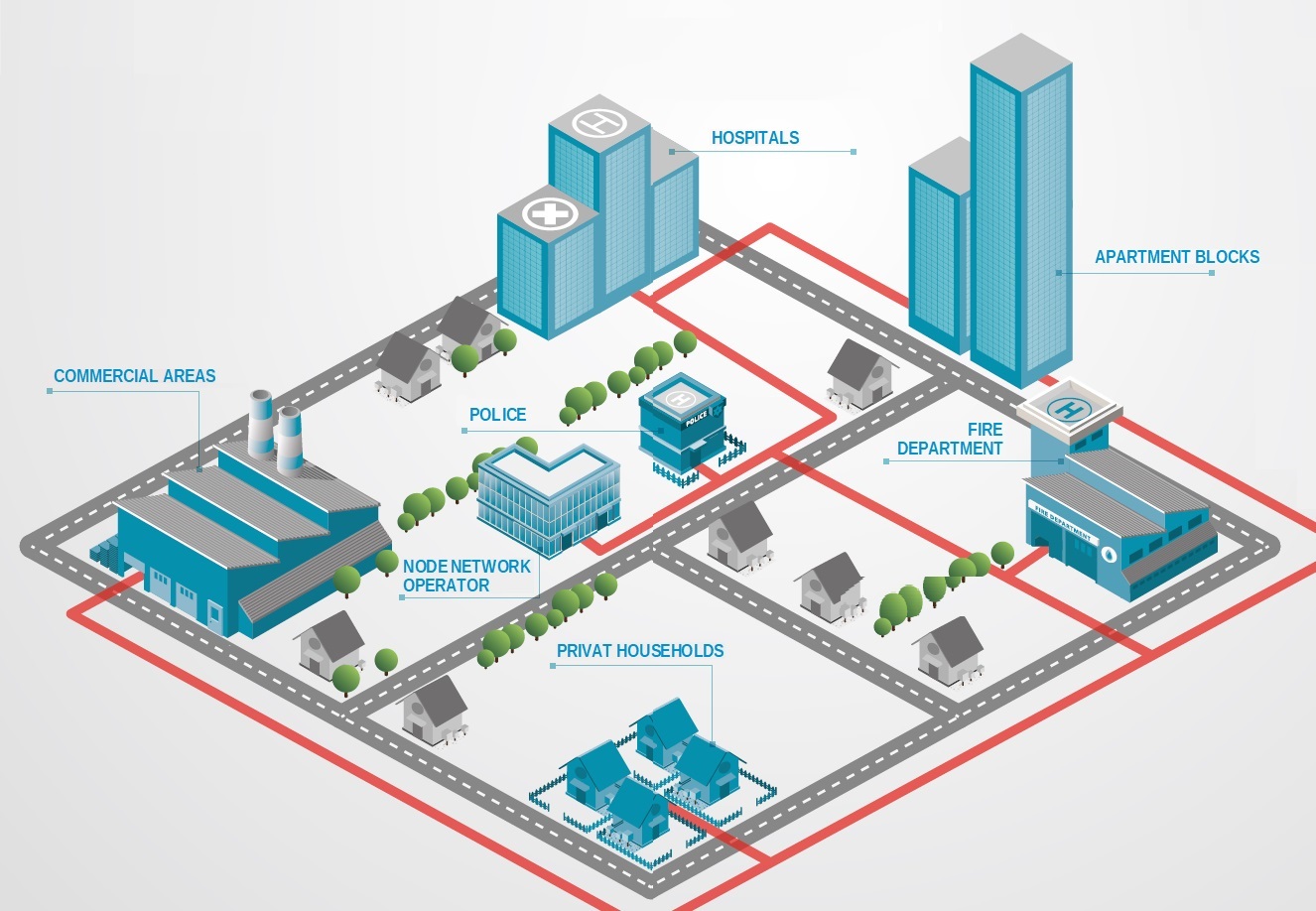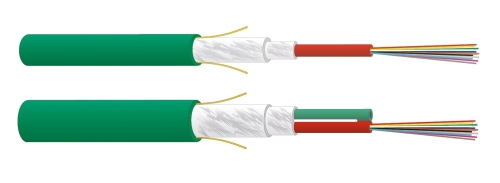
Fibre optic cables
Bespoke infrastructure solutions from DÄTWYLER

Best networks. For perfect communication.
From the single component to the integrated solution.
DÄTWYLER, as an experienced and innovative cable manufacturer, supplies complete fibre optic cabling solutions for communications – irrespective of whether it is an office block, hotel, hospital, sports stadium, television studio or tunnel.
DÄTWYLER has over 100 years of systematically acquired know-how in the development and manufacture of products and solutions: for the IT infrastructure in data centres and intelligent buildings as well as for fibre networks. DÄTWYLER has a comprehensive offering of fibre optic cables and components for high-density, high-speed data network solutions. DÄTWYLER solutions are designed, overall and in detail, to fully meet the demands of the future. They are adapted to meet customer’s needs and ensure a network infrastructure that will support future applications for a long time to come.
SSB-Electronic as a partner of DÄTWYLER is available to assist you with all application questions. If you would like to implement a project - please contact us.

Conclusive fibre optic systems
The two major classifications of optical fibre are single-mode and multimode.

Single-mode fibres are best suited for longer distance applications (>1 km). Single-mode fibre is designed to carry only one mode of light, and thus does not experience modal dispersion like multimode fibre.
Applications: LAN backbone, data centre, city network, access network, FTTx network, long haul network (WAN).
Optical single-mode fibre cable transmission performance parameters
The fibre designation (OS2) corresponds to the designation of ISO/IEC 11801 or EN 50173. OS2 is commonly referred to as
“low water peak” single-mode fibre and is characterized by having a low attenuation coefficient in the vicinity of 1383 nm.

MULTIMODE FIBRES
Multimode fibres are suitable for premises applications where the links are a few hundred meters long and there are many connectors. The larger core diameter of multimode fibre allows the use of affordable 850 nm transmittor diodes as well as low-cost connectors. Multimode fibre uses a graded index profile to minimize modal dispersion. This design maximizes bandwidth while maintaining large cores for simplified system assembly and lower network costs. For multimode fibres, bandwidth is the major limiting factor in network design.
Applications: in Premises cabling for LAN backbones (Campus and Vertical/Riser cabling), Fibre to the Office and Fibre to the Desk (FTTO, FTTD = horizontal cabling) as well as in Data Centre cabling.
Optical multimode fibre cable transmission performance parameters
The fibre designation (OM3 up to OM5) corresponds to the designation of ISO/IEC 11801 or EN 50173. Laser-optimised fibres are defined by their Effective Modal Bandwidth (minEMB, 850 nm VCSEL laser).

Bend optimized multimode fibres (G50/125)
With higher bit-rate transmissions (≥ 10 Gbit/s) the attenuation budgets are constantly decreasing. Thus, one has to focus on high-grade products when selecting the fibre optic components. The optical fibres should provide an enhanced transmission reliability and reduce the risks of additional losses that may arise as a result of typical faulty use and of mechanical stress. This is the reason why Datwyler use the bend optimized G50/125 fibre for OM3 up to OM5 fibre categories: In case that the minimum bending radius is undercut, this leads not necessarily to failure of a connection. However, too small bending radii should be avoided to extend the lifetime of fibre optic cables (and optical fibres). The bend optimized G50/125 fibres are fully compatible with “traditional” G50/125 fibres as described in the standard.


